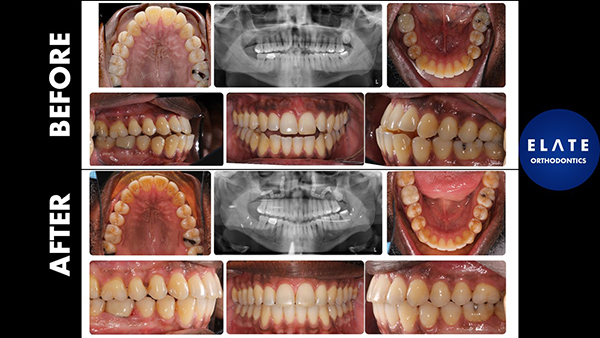
Everything You Need to Know About Orthognathic (Jaw) Surgery
Orthognathic surgery, commonly known as jaw surgery, is a procedure designed to correct jaw alignment issues that cannot be resolved with orthodontics alone. This surgery can improve both the function and aesthetics of the jaw, addressing problems such as severe overbites, underbites, and jaw asymmetry. If you’re curious about whether you might need jaw surgery or how it works, this guide covers the most frequently asked questions.
What Is Jaw Surgery and Its Common Types?
Jaw surgery involves repositioning the upper jaw, lower jaw, or both to correct misalignments. Orthodontists often collaborate with oral surgeons to plan and execute the procedure as part of a comprehensive treatment plan. The surgery may address a variety of concerns, including improving bite function, speech, breathing, and facial appearance.
Here are the most common types of jaw surgery:
- Upper Jaw (Maxillary) Surgery: Corrects issues such as overbites, open bites, and midface deficiencies by repositioning the upper jaw.
- LeFort I Osteotomy: This involves repositioning the upper jaw horizontally to address vertical or anterior-posterior discrepancies.
- Two-Piece Maxillary Surgery: Used for patients who require split adjustments to address complex asymmetry or palatal expansion.
- Three-Piece Maxillary Surgery: Involves separating the maxilla into multiple sections for significant realignment and reshaping.
- Lower Jaw (Mandibular) Surgery: Targets underbites, overgrowth, or asymmetry by adjusting the lower jaw’s position.
- Double Jaw Surgery: Involves adjusting both the upper and lower jaws to correct severe alignment and functional problems.
- Genioplasty (Chin Surgery): Often performed alongside jaw surgery to reposition the chin for improved facial harmony.
- Surgery for Sleep Apnea: In cases where obstructive sleep apnea is caused by jaw positioning, jaw advancement surgery (maxillomandibular advancement) can help improve airway function by enlarging the airway space.
- Segmental Jaw Surgery: Involves splitting sections of the jaw to correct localized misalignment or spacing issues.
Learn more about how orthodontists can address severe alignment issues.
Jaw surgery involves repositioning the upper jaw, lower jaw, or both to correct misalignments. Orthodontists often collaborate with oral surgeons to plan and execute the procedure as part of a comprehensive treatment plan. The surgery may address a variety of concerns, including improving bite function, speech, breathing, and facial appearance.
Here are the most common types of jaw surgery:
- Upper Jaw (Maxillary) Surgery: Corrects issues such as overbites, open bites, and midface deficiencies by repositioning the upper jaw.
- Lower Jaw (Mandibular) Surgery: Targets underbites, overgrowth, or asymmetry by adjusting the lower jaw’s position.
- Double Jaw Surgery: Involves adjusting both the upper and lower jaws to correct severe alignment and functional problems.
- Genioplasty (Chin Surgery): Often performed alongside jaw surgery to reposition the chin for improved facial harmony.
- Segmental Jaw Surgery: Involves splitting sections of the jaw to correct localized misalignment or spacing issues.
Learn more about how orthodontists can address severe alignment issues.
Jaw surgery involves repositioning the upper jaw, lower jaw, or both to correct misalignments. Orthodontists often collaborate with oral surgeons to plan and execute the procedure as part of a comprehensive treatment plan. The surgery may address a variety of concerns, including improving bite function, speech, breathing, and facial appearance.
- Upper Jaw (Maxillary) Surgery: Corrects an overbite, open bite, or midface deficiency.
- Lower Jaw (Mandibular) Surgery: Addresses issues like underbites or lower jaw asymmetry.
- Combination (Double Jaw) Surgery: Involves both jaws and is often recommended for severe cases.
- Genioplasty (Chin Surgery): Often combined with jaw surgery to correct chin position for optimal facial balance.
Learn more about how orthodontists can address severe alignment issues.
Step-by-Step Approach in Jaw Surgery Treatment
Jaw surgery is typically part of a larger orthodontic treatment plan and involves several stages:
- Initial Evaluation: Your orthodontist and oral surgeon conduct X-rays, 3D scans, and physical assessments to diagnose your condition and plan treatment.
- Pre-Surgery Orthodontics: Braces or aligners may be used to align your teeth in preparation for surgery. This phase can last several months.
- Surgery: The procedure is performed under general anesthesia. Depending on the case, the surgeon may reposition one or both jaws, securing them with titanium plates and screws.
- Post-Surgery Recovery: Patients typically stay in the hospital for 1-2 days and follow a liquid or soft-food diet for the initial recovery period.
- Continued Orthodontic Treatment: Braces or aligners remain in place to fine-tune your bite and ensure optimal alignment.
- Final Results: After full healing, you will have improved jaw function and aesthetics.
Is Surgery Needed for a Broken Jaw?
Yes, surgery may be required for a broken jaw, depending on the severity of the fracture. In cases where the bone is severely misaligned, surgical intervention is necessary to ensure proper healing and functionality.
- Common Procedures: Titanium plates and screws may be used to stabilize the bone during the healing process. Some cases may also require the jaw to be temporarily wired shut.
- Symptoms: Pain, swelling, bruising, and difficulty opening or closing the mouth are common indicators of a broken jaw.
- Post-Surgery Care: Rest, a soft-food diet, and follow-up appointments are essential for proper recovery.
Learn how general dental care and surgery work together.
How Much Does Jaw Surgery Cost?
The cost of jaw surgery can vary depending on the complexity of the procedure, surgeon’s fees, hospital expenses, and the duration of care required. On average, orthognathic surgery may range from $20,000 to $40,000.
- Breakdown of Costs: This estimate typically includes pre-operative imaging (X-rays, 3D scans), surgical fees, anesthesia, hospital stay, and follow-up care.
- How Much Does Orthognathic Jaw Surgery Cost with Insurance? If deemed medically necessary, insurance may cover part or all of the costs. However, purely cosmetic procedures are usually excluded from coverage.
- Financing Options: Many patients explore payment plans or healthcare financing to make surgery more affordable.
Discover affordable orthodontic options in Texas.
What Is Double Jaw Surgery?
Double jaw surgery involves operating on both the upper and lower jaws to correct severe misalignment issues. This comprehensive approach ensures better overall facial balance and improved functionality.
- Who Needs It? Patients with complex bite problems, such as those affecting both jaws, may require this procedure.
- Benefits: Improved facial symmetry, better jaw function, and enhanced breathing (especially in cases involving obstructive sleep apnea).
- Recovery Time: Recovery can take several months. Patients typically need 6 to 8 weeks to return to light activities, though complete bone healing may take longer.
How Long Does It Take to Heal from Jaw Surgery?
Healing from jaw surgery involves multiple stages, with noticeable progress occurring within weeks but full recovery extending over several months.
- Immediate Recovery: Swelling, bruising, and discomfort are common during the first two weeks.
- Bone Healing: Complete bone healing may take 6 to 12 months. During this time, patients need to avoid high-impact activities.
- Diet: Soft or liquid diets are recommended for the first few weeks, gradually transitioning to normal foods as healing progresses.
Learn about managing post-surgical pain and discomfort.
Do They Remove the Titanium Plates After Jaw Surgery?
Titanium plates and screws are often used to stabilize the jaw during surgery. These components are biocompatible and designed to remain in place permanently. However, in rare cases where the plates cause discomfort or complications, they may be removed through a follow-up procedure.
Can Jaw Surgery Change Your Face?
Yes, orthognathic surgery can significantly alter your facial structure. Improvements in jaw alignment can enhance facial symmetry, profile balance, and overall aesthetics.
- Before and After: Patients often report increased confidence and improved appearance post-surgery.
- Functional Benefits: In addition to aesthetic changes, surgery can also resolve chronic issues like difficulty chewing, breathing, or speaking.
Does Jaw Surgery Hurt?
While jaw surgery is a major procedure, pain is typically well-managed with medications prescribed by your healthcare team.
- Post-Surgical Pain: Most patients experience swelling, soreness, and jaw stiffness, particularly in the first few weeks.
- Pain Management: Over-the-counter or prescription pain relievers, as well as cold compresses, are commonly used to reduce discomfort.
When Can I Sleep on My Side After Jaw Surgery?
Patients are generally advised to sleep on their back with their head elevated for the first few weeks after surgery. This helps minimize swelling and promotes proper healing. Once initial swelling subsides, patients can gradually return to their preferred sleeping positions.
What Is Camouflage Orthodontic Treatment?
Camouflage orthodontic treatment is a non-surgical approach used to mask certain jaw misalignments. Instead of altering the jaw structure through surgery, this treatment focuses on repositioning the teeth to improve bite and appearance.
- Who Is It For? This option is often recommended for patients with mild to moderate jaw discrepancies.
- Limitations: While effective for some cases, camouflage treatment may not fully correct functional issues related to severe jaw misalignment.
- Benefits: Less invasive than surgery with shorter recovery times.
Explore orthodontic treatment options.
How to Know if Insurance Covers Jaw Surgery?
Insurance coverage for jaw surgery depends on whether the procedure is deemed medically necessary. Here’s what you need to know:
- Medical Necessity: If the surgery is required to correct functional issues (e.g., difficulty chewing, breathing, or speaking), insurance is more likely to cover part or all of the procedure.
- Documentation: Your healthcare providers will need to submit detailed records and imaging to your insurance company.
- Cosmetic Exclusions: Procedures performed solely for cosmetic reasons are typically not covered.
- Ask Your Provider: Contact your insurance company to confirm what’s included in your plan.
Learn how insurance can make orthodontic treatment affordable.
How to Know if You Need Jaw Surgery
You may be a candidate for jaw surgery if you experience:
- Severe Bite Problems: Such as overbites, underbites, or open bites that affect your ability to chew or speak.
- Chronic Jaw Pain: Often related to TMJ disorders or structural misalignment.
- Facial Asymmetry: Noticeable imbalance in your facial features caused by jaw positioning.
Orthodontists and oral surgeons work together to perform a comprehensive evaluation, including X-rays and 3D imaging, to determine if surgery is necessary.
Schedule a consultation with Elate Orthodontics today to discuss your options.
